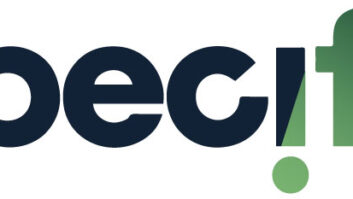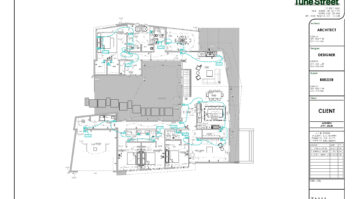Documentation and drawings are vital to complete the job quickly and accurately, yet our industry often proceeds without them; you add value with your drawings. Of course, their value does not arise merely by their presence, but rather by the effectiveness of their content. It is clear that the only way to add meaningful content to your drawings is by using standards in their preparation.
Standards are the basis for useful and consistent documents. One standard that has been very effective is the use of external references. External references are drawings that are linked, but not actually inserted into your drawings. First, these help you use a third partys efforts, which will save you time and money. Secondly, they provide consistency because if you make a change, you make it in one location and it is reflected in other drawings where it is referenced. Lastly, external referencing shields you from random future changes.
Lets say that you receive and import a floor plan from your project architect. Using this floor plan as an external reference saves you the time and money of creating a floor plan yourself. Next you begin working on the equipment room, documenting the rack location on the referenced floor plan. Then you create your rack elevation page where you also show the rack location. Later you receive a call from the architect notifying you that the location of the rack has changed. Because you used an external reference for the location, you only have to change this once. To do so, you simply open and change the external reference. This effort forces a conscious effort to make a change, and provides control over your documentation. It eliminates unintended changes to documents.
When you hear someone say that he is working on a drawing for a low-voltage system, he may be referring to a wiring diagram, which plays a dominant role in the drawings set. Floor plans, however, also can be very useful in designing a low-voltage system. You often receive floor plans from the architect and use them just to understand the layout of the residence. By placing a device call-out standard on these drawings, the floor plans can become more valuable.
For example, a designer positions a device on the floor plan by placing a block symbol on his drawing. That block symbol is also attached to a capsule, a little bubble which provides important information such as device type, the subsystem to which the device belongs (e.g., WHA or HVAC), the room identifier and the location of that device within the room. To support this standard, the blocks and capsules are driven by a device schedule in which all devices are given a specific number. This number gets entered into the capsule. For example, a plasma displays brand/model pair is device number P3 on the device schedule. Now, wherever you have this specific type of plasma display located, you would enter the symbol P3 in its capsule. Once you have established a call-out standard, you can then pre-define device locations, and layout size or configuration calculations. These device call-outs also help you interlink locations when explaining your wiring diagrams.
Another practical standard is the development of a set of blocks to illustrate a wiring scheme. These blocks represent all the connections on a single piece of equipment, showing inputs on the left side and outputs on the right. They are organized by signal type: first audio signals, then video signals, control signals and so on for power and any manufacturer-specified signals such as control-S.
This is not a difficult task, as all information is provided in cut sheets and equipment manuals that you collect when choosing equipment. Once you create blocks, you can save them in a block library and simply insert them in CAD as you need them. This will make the process of creating wiring diagrams faster and more cost effective. Using a standard method to create your blocks will increase the consistency of all of your wiring diagrams and promote their aesthetic appeal.
If you do not have standards for your documentation, put them in place soon. Standards will benefit your organization by giving strength to your documentation department and will eliminate relying on one person.
Berner Martinez is a CAD designer for Axiom Design in Pleasanton, California.







